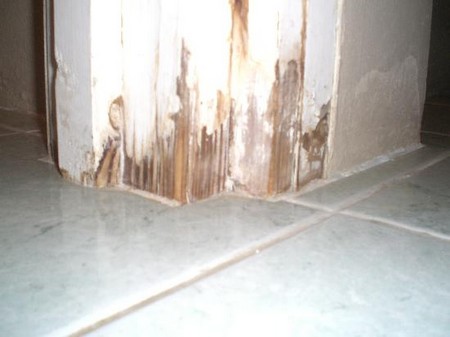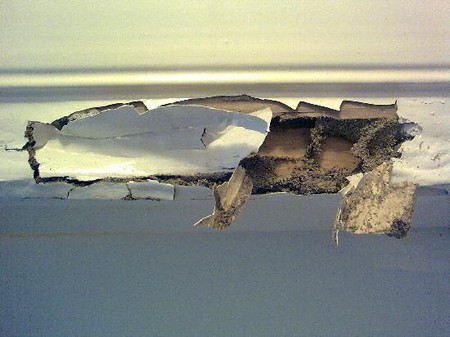The great majority of external door frames are constructed of softwood, and this, if it is regularly maintained with a good point system, will give years of excellent service. However, the ends of doors sills and the frame posts are vulnerable to wet rot if they are subject to continual wetting. This can happen when the frame has moved because of shrinkage of them timber, or where old pointing has fallen out and left a gap where water can get it. Alternatively, old and porous brickwork or an ineffective damp-proof course can be the cause of wet-rot damage.
Prevention is always better than any cure, so check round the frame for any shrinkage gaps and apply a mastic sealant where necessary. Keep all pointing in good order. A slight outbreak of rot can be treated with the aid of a proprietary repair kit and preservative. It is possible for the sill to rot without the frame posts being affected. In this case just replace the sill. If the posts are also affected, repair them. In some cases the post ends can be tenoned into the sill and fitted as a unit.

Replacing a sill
You can buy 150 x 50mm (6 x 2in) softwood or hardwood door sill sections which can be cut to the required length. If your sill is not of a standard-shaped section the replacement can be made to order. It is more economical in the longer run to specify a hardwood such as oak or utile, as it will last much longer.
Taking out the old
First measure and note down the width of the door opening, then remove the door. The posts are usually tenoned into the sill, so to separate the sill from them split it lengthwise with a wood chisel. A saw cut across the centre of the sill can make the job easier.
The ends of the sill are set into the brickwork on either side, so cut away the bricks to make the removal of the old sill and insertion of the new one easier. Use a plugging chisel to cut carefully through the mortar round the bricks and try to preserve them for reuse after fitting the sill.
The new sill has to be inserted from the front so that it can be tucked under the posts and into the brickwork. Cut the tenons off level with the shoulders of the posts. Mark and cut shallow housings for the ends of the posts in the top of the new sill, spaced apart as previously noted. The housings must be deep enough to take the full width of the posts, which may mean the sill being slightly higher than the original one, so that you will have to trim a little off the bottom of the door.
Fitting the new
Try the new sill for fit and check that it is level. Before fixing it apply a wood preservative to its underside and ends, and, as a measure against rising or penetrating damp, apply two or three coats of bitumen latex emulsion to the brickwork.

When both treatments are dry, glue the sill to the posts, using an exterior woodworking adhesive. Wedge the underside of the sill with slate to push it up against the ends of the posts, skew-nail the posts to it and leave it for the adhesive to set.
Pack the gap between the underside of the sill and the masonry with a stiff mortar of 3 parts sand: I part cement, and rebond and point the bricks. Finish by treating the wood with preservative and applying a mastic sealant round the door frame.